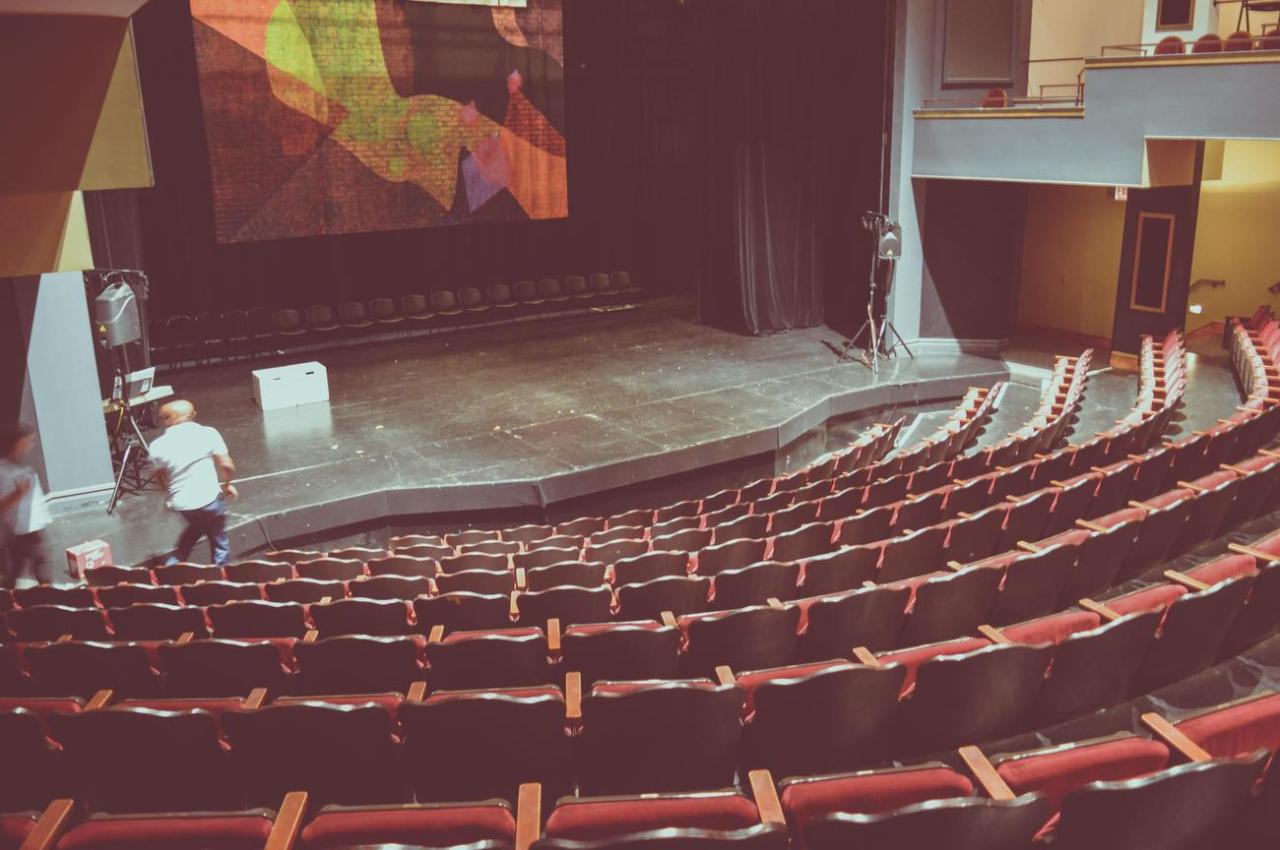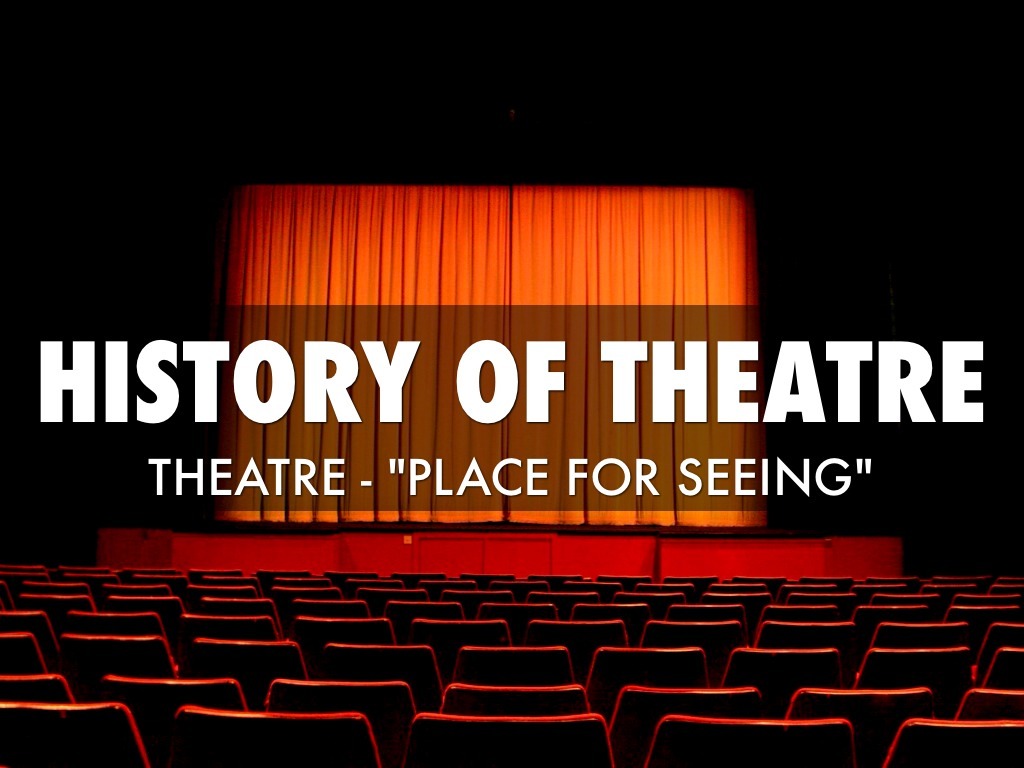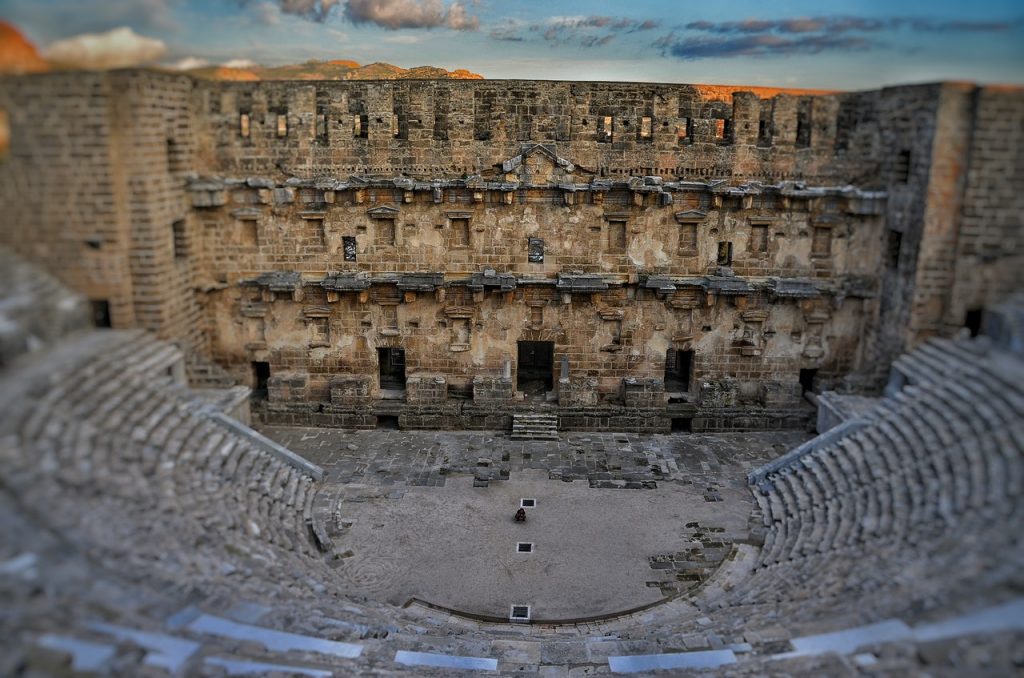5 Fascinating Facts About the History of Theatre takes you on a captivating journey through the evolution of this art form, from ancient civilizations to modern innovations. Get ready to be amazed by some lesser-known insights about the world of theatre!
From the grand stages of ancient Greek theaters to the groundbreaking works of Shakespeare and the avant-garde experiments of modern playwrights, the history of theatre is a rich tapestry of creativity and cultural significance.
Overview of Theatre History

The history of theatre dates back to ancient civilizations, where performances were a significant part of cultural and religious rituals. Over the centuries, theatre has evolved into a popular form of entertainment and artistic expression, reflecting the societal values and beliefs of different time periods.
Ancient Theatre
- Ancient Greek theatre, dating back to the 5th century BC, is considered the birthplace of modern Western theatre.
- Theatre in ancient Rome incorporated elements of Greek drama but also introduced innovations like the use of gladiators in performances.
- In Asia, traditional theatre forms like Kabuki in Japan and Beijing Opera in China have rich histories dating back centuries.
Medieval and Renaissance Theatre
- During the Middle Ages, theatre thrived through religious plays performed in churches and town squares, evolving into morality plays and mystery cycles.
- The Renaissance period saw a revival of classical Greek and Roman theatre styles, leading to the creation of iconic works by playwrights like William Shakespeare.
Modern Theatre
- The 19th and 20th centuries witnessed significant advancements in theatre technology, such as the use of electric lighting and sound effects.
- Avant-garde movements like Expressionism and Absurdism challenged traditional theatrical conventions, pushing boundaries and exploring new forms of storytelling.
- Today, theatre continues to evolve with the rise of immersive and interactive performances, blurring the lines between actors and audience members.
Ancient Theatre Traditions
The origins of theatre can be traced back to ancient civilizations such as the Greeks, Romans, and various Asian cultures. Each of these societies had their own unique performance styles, venues, and purposes for theatre, shaping the early traditions we see today.
Greek Theatre
Greek theatre, particularly in Athens, was a significant cultural and religious event. Performances were held in outdoor amphitheaters like the famous Theatre of Dionysus. Playwrights like Aeschylus, Sophocles, and Euripides wrote iconic tragedies and comedies that explored themes of fate, morality, and the human experience.
Roman Theatre
Roman theatre was heavily influenced by Greek traditions but had its own unique characteristics. Performances took place in large, elaborate theaters like the Theatre of Pompey. Playwrights like Plautus and Terence adapted Greek plays and created their own works focusing on satire, farce, and historical events.
Asian Theatre
Asian cultures like Chinese, Japanese, and Indian also had rich theatrical traditions. Chinese opera, Noh and Kabuki theatre in Japan, and Sanskrit dramas in India showcased a blend of music, dance, and storytelling. These performances often had religious or moral themes and were performed in specific venues like temples or royal courts.
Medieval and Renaissance Theatre
Medieval and Renaissance periods played a crucial role in shaping the history of theatre, bringing forth significant changes and innovations that paved the way for the modern theatrical practices we see today.
Emergence of Religious Plays
During the Medieval period, religious plays, also known as mystery plays, were commonly performed in churches or town squares. These plays often depicted stories from the Bible, aiming to educate and inspire the audience about religious themes and moral lessons.
- Religious plays were performed by members of the clergy or local guilds and were an important form of entertainment and religious instruction for the community.
- The performances often involved elaborate costumes, music, and dance, captivating the audience and creating a sense of spectacle and reverence.
Morality Plays and Influence of Classical Texts
In addition to religious plays, morality plays became popular during the Medieval and Renaissance periods. These plays focused on moral lessons and the struggle between good and evil, often featuring allegorical characters representing virtues and vices.
Wondering how long it takes to install Google Fiber – 2 or 4 hours? Find out the duration of the installation process here.
- Classical texts, particularly those of ancient Greek and Roman playwrights like Seneca and Plautus, began to influence theatre during the Renaissance, leading to a revival of interest in classical drama and themes.
- The use of classical texts inspired playwrights to explore complex characters, themes, and theatrical techniques, contributing to the development of more sophisticated and intellectually stimulating plays.
Evolution of Theatre Architecture and Staging Techniques
The Medieval and Renaissance periods saw significant advancements in theatre architecture and staging techniques, transforming the way plays were presented to audiences.
- Medieval theatre often took place in outdoor spaces, such as courtyards or town squares, with minimal set design and props.
- During the Renaissance, the introduction of permanent theatres, like the Globe Theatre in London, allowed for more elaborate sets, lighting effects, and sound design, enhancing the overall theatrical experience.
The Elizabethan Era and Shakespearean Theatre

The Elizabethan Era marked a golden age for English theatre, with significant advancements and innovations in dramatic arts. This period, encompassing the reign of Queen Elizabeth I from 1558 to 1603, saw the flourishing of theatre as a popular form of entertainment and artistic expression.
Significance of the Elizabethan Era
During the Elizabethan Era, theatre became a prominent part of English culture, attracting audiences from all social classes. The period witnessed the construction of purpose-built theatres, the professionalization of acting troupes, and the emergence of renowned playwrights like William Shakespeare.
Works of William Shakespeare
William Shakespeare, often regarded as the greatest playwright in the English language, produced a vast body of work that continues to captivate audiences worldwide. His plays, such as “Romeo and Juliet,” “Hamlet,” and “Macbeth,” are celebrated for their timeless themes, complex characters, and masterful use of language.
Impact of Shakespearean Theatre
Shakespeare’s plays have had a lasting impact on theatre, influencing storytelling techniques, character development, and dramatic conventions. His works have been adapted into various forms, from stage performances to films, showcasing their enduring appeal and universal relevance.
The Globe Theatre
The Globe Theatre, where many of Shakespeare’s plays were originally performed, played a crucial role in popularizing theatre for the masses. Its open-air design, unique architectural features, and raucous atmosphere created a dynamic setting for theatrical productions, attracting diverse audiences and shaping the theatrical experience of the time.
Modern Theatre Innovations
As we delve into the 19th and 20th centuries, we witness a remarkable evolution in the world of theatre. The era brought about a wave of new ideas, techniques, and movements that revolutionized the way stories were told on stage.
Rise of Realism and Naturalism, 5 Fascinating Facts About the History of Theatre
The 19th century saw the emergence of realism and naturalism in theatre, where playwrights and directors sought to portray life as it is, with a focus on everyday situations and characters. Realism aimed to depict the truth of human existence, while naturalism delved even deeper into the gritty realities of society.
- The rise of realism can be attributed to playwrights like Henrik Ibsen, known for works like “A Doll’s House,” which challenged societal norms and conventions.
- Naturalism found its champion in Émile Zola, who believed in presenting life in its raw and unfiltered form on stage.
- Actors like Konstantin Stanislavski further popularized these movements with their emphasis on psychological realism and character development.
Experimental Theatre Movements
Alongside realism and naturalism, the 20th century witnessed a surge in experimental theatre movements that pushed the boundaries of traditional storytelling. These avant-garde approaches sought to explore new forms of expression and challenge audience perceptions.
- Theatre of the Absurd, spearheaded by playwrights like Samuel Beckett and Eugène Ionesco, delved into the existential and absurd aspects of human existence.
- Bertolt Brecht introduced the concept of epic theatre, which aimed to provoke critical thinking and social change through alienation techniques and political themes.
- Experimental directors like Jerzy Grotowski and Peter Brook revolutionized the theatrical experience through their innovative staging and immersive performances.
Key Figures in Modern Theatre
Throughout the 19th and 20th centuries, several key figures emerged who left an indelible mark on modern theatre, shaping its trajectory and influencing generations of artists.
- Anton Chekhov, known for his masterful plays blending comedy and tragedy, brought a new depth and complexity to character portrayal.
- Tennessee Williams explored themes of desire, loneliness, and societal constraints in works like “A Streetcar Named Desire” and “The Glass Menagerie.”
- Directors like Elia Kazan and Ingmar Bergman revolutionized staging techniques and brought a cinematic sensibility to the theatre.
Final Summary: 5 Fascinating Facts About The History Of Theatre

As the curtains draw to a close on our exploration of 5 Fascinating Facts About the History of Theatre, we are left with a profound appreciation for the enduring legacy of this dynamic art form. From its humble beginnings to its modern-day transformations, theatre continues to captivate and inspire audiences around the globe.
FAQ Insights
What were the key milestones in the development of theatre?
Key milestones include the origins of theatre in ancient civilizations, the impact of Medieval and Renaissance periods, the significance of the Elizabethan era, and the innovations in modern theatre movements.
Who were some influential playwrights in early theatre traditions?
Ancient theatre traditions were shaped by playwrights like Sophocles, Euripides, Plautus, and Terence, whose works continue to influence modern theatrical practices.
How did theatre architecture evolve during the Medieval and Renaissance periods?
Theatre architecture evolved from simple outdoor amphitheaters to elaborate indoor stages with intricate set designs, reflecting the changing tastes and demands of audiences.
What impact did William Shakespeare have on the Elizabethan era?
Shakespeare’s works not only defined the Elizabethan era but also laid the foundation for English drama, showcasing the power of storytelling and the complexities of human nature.
Which modern theatre movements revolutionized stage performances?
Realism, naturalism, and experimental theatre movements in the 19th and 20th centuries challenged traditional norms and pushed boundaries in storytelling, performance, and staging techniques.




